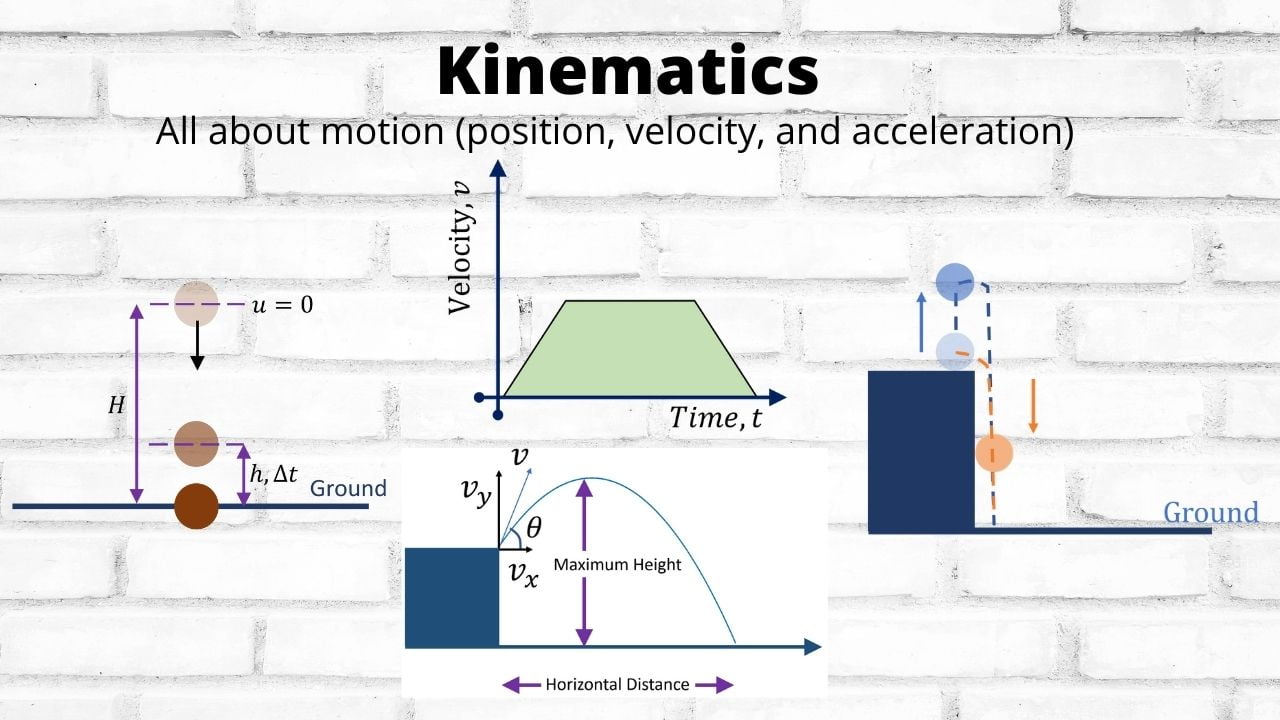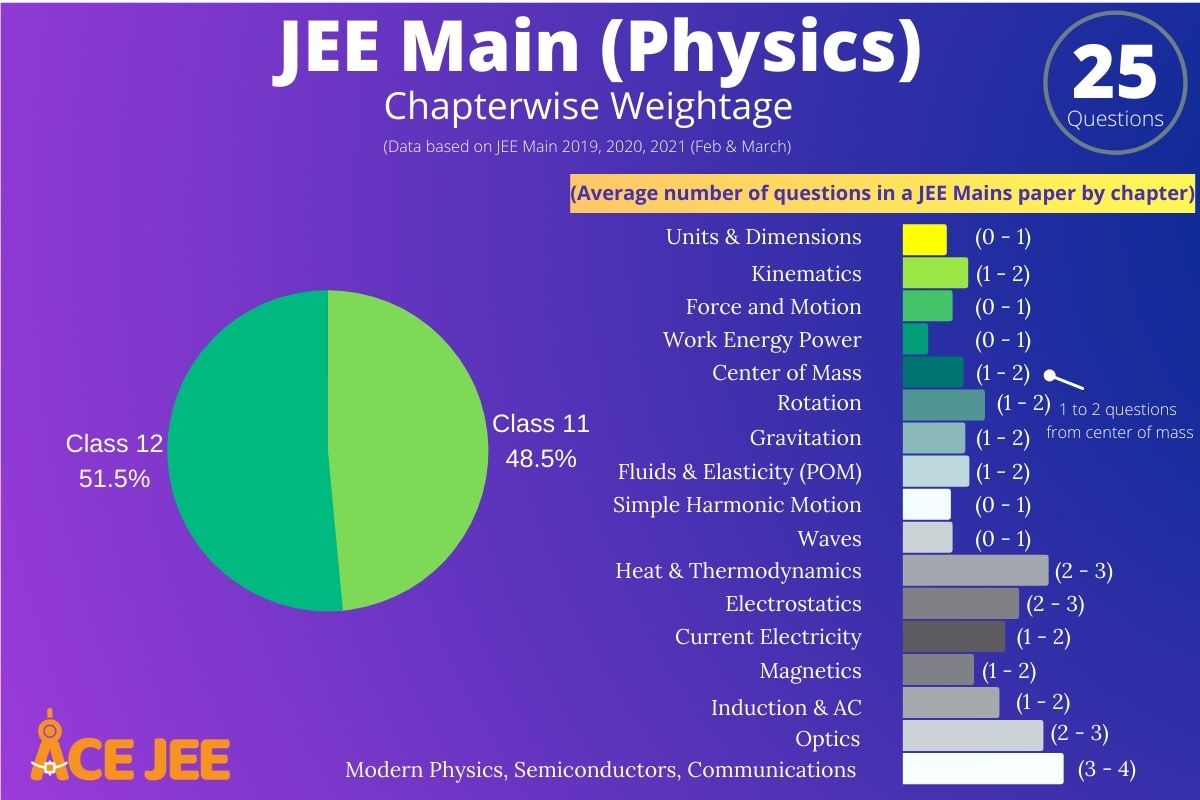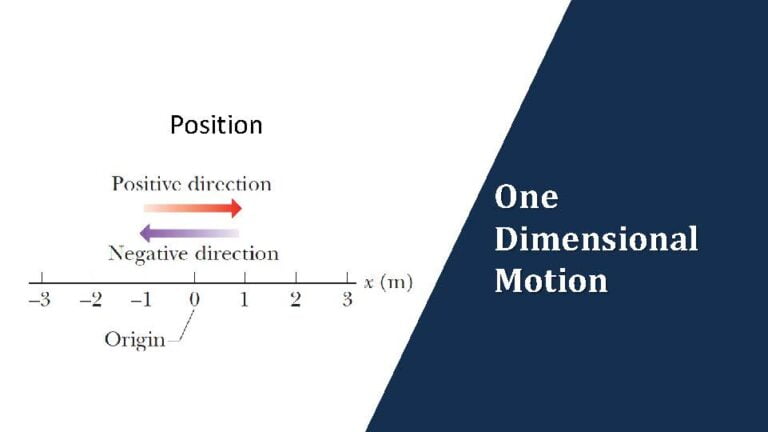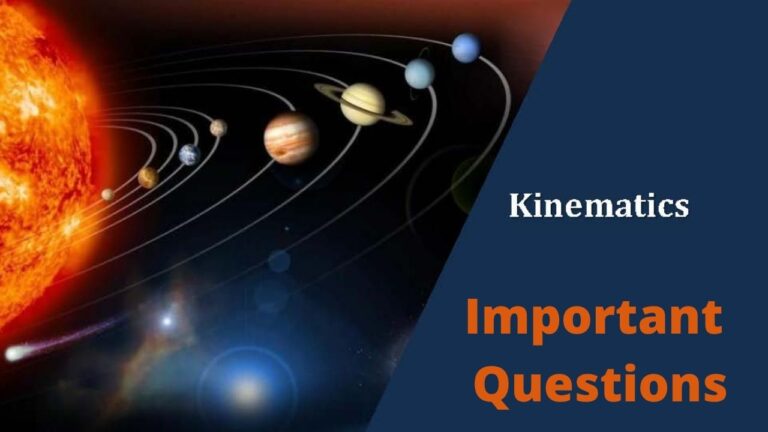
What is Kinematics?
Kinematics is the study of motion, where we are interested in finding out information about position and velocity of a particle over the time duration of interest. Note that here we are not concerned about the cause of motion, in other words, here we will not focus on the forces acting on the particle. But rather we would be given some information about the position or velocity or acceleration of the particle at some time $t$ and we will then use the kinematic equations to find the unknowns about the motion of the particle.
How important is Kinematics for JEE (Main & Advanced)?
So, based on the previous year question papers, in JEE Main, you can expect 1 to 2 questions from Kinematics while in JEE advanced (Paper 1 and Paper 2 put together) you can expect 0 to 1 question. And it might be helpful to point out that in JEE Main 2020 and 2021, we saw equal spread of questions between 1D (1 Dimensional) Motion and 2D (2 Dimensional) Motion (including Vectors) but in JEE Advanced the question primarily involves 2 dimensional motion as 2D questions tend to have higher complexity. But you should remember that Kinematics forms the foundation for chapters to come. So it is important that you get very comfortable with this chapter.

Topics covered under Kinematics
One Dimensional Motion | Important Questions | JEE PYQs
Vectors | Important Questions | JEE PYQ’s
Two Dimensional Motion | Important Questions | JEE PYQ’s
Projectile Motion | Important Questions | JEE PYQs
- Types of projectile motion
- Equations of projectile motion
- Range of a projectile
- Maximum height of a projectile
- Trajectory of a projectile
- Radius of curvature of projectile
- Velocity of projectile at time $t$ or height $h$
- Projectile Motion Examples
- Projectile motion along an inclined plane
- Relative motion of projectile(s)
Relative Velocity | Important Questions | JEE PYQs
Circular Motion | Important Questions | JEE PYQs
Kinematics Practice Questions | DPP1 | DPP2 | Mock Tests | NTA Abhyas Questions
Kinematics Notes
How to master kinematics?
1.Get comfortable with the definitions of displacement, instantaneous velocity and instantaneous acceleration.
2. Develop some basic understanding of differentiation and integration. (Will be useful when dealing with questions involving variable acceleration)
3. Learn about the position vs time, velocity vs time, and acceleration vs time graphs
4. Understand how equations of one dimensional motion with particle moving at constant acceleration can be derived from velocity vs time graph or from the definition of instantaneous velocity and acceleration
5. Practice good amount of questions on one dimensional motion. I would recommend that you understand how different questions are asked on one dimensional motion (there are essentially 9 different types of questions) and practice questions for each of the question type.
6. Once you become comfortable with one dimensional motion, you will learn about vectors, which is essential to describe motion in two dimensions. Here, you should get comfortable with graphical representation of vectors and vector algebra (note: scalar/dot and cross/vector products will be important in the chapters to come).
7. Practice good amount of questions on vector algebra. Note that there are primarily 3 types of questions that can be asked on vectors in physics paper
8. Moving on to 2 dimensional motion, you should now be able to apply definitions of instantaneous velocity and acceleration learnt in one dimensional motion along with 1D kinematic equations for constant acceleration to 2D motion. And given $x(t)$, $y(t)$ and $z(t)$, you should be able to determine velocity, $\overrightarrow{v}(t)$, and acceleration, $\overrightarrow{a}(t)$ vectors. Or given, constant acceleration $\overrightarrow{a}$, you should be able to determine $\overrightarrow{r}(t)$
9. Now you are ready to dive in projectile motion, where in a particle is thrown at an angle from the horizontal, with gravitational acceleration $g$ in vertical direction and no acceleration in the horizontal direction, wherein, there are 15 different types of questions that you should be aware of.
10. Towards the end, you need to learn the concept of relative velocity, where you will have to determine position or velocity of one particle with respect to other. $\overrightarrow{r}_{BA} =$ $\overrightarrow{r}_B – \overrightarrow{r}_A$ and $\overrightarrow{V}_{BA} = $ $\overrightarrow{V}_B – \overrightarrow{V}_A$, where $\overrightarrow{r}_{BA}$ is the position of $B$ with respect to $A$ and $\overrightarrow{V}_{BA}$ is the velocity of $B$ as seen by $A$. Do go through the 12 different types of questions on relative motion.
Now let’s look at some of the commonly asked questions on Kinematics





Sir will you provide example of each different types of kinematic questions
Nice 👍😊